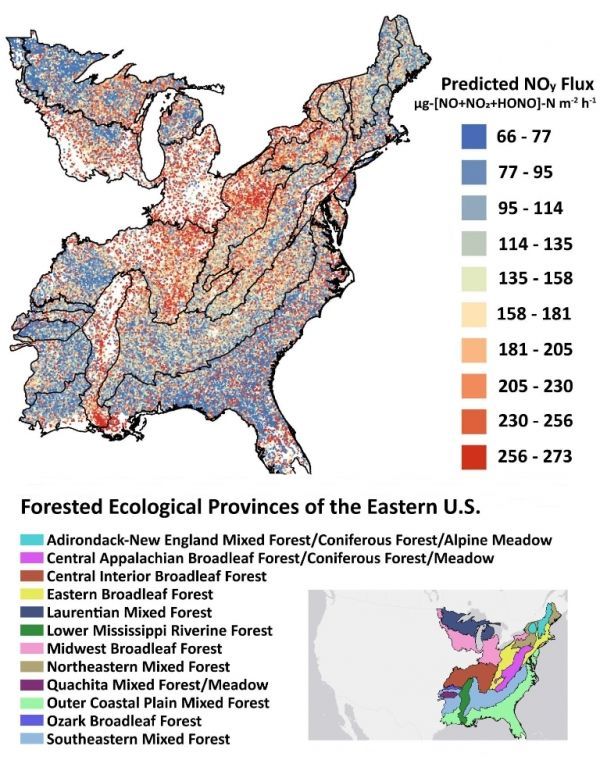A study from Indiana University has found that trees influence whether soil can remove or emit gases that cause smog, acid rain and respiratory problems.
The chemicals, collectively known as reactive nitrogen oxides, are produced by soil bacteria that feed on naturally occurring ammonium -- as well as nitrogen fertilizers from industrial and agricultural sources that enter soil from the atmosphere.
The study was reported Jan. 18 in the Proceedings of the National Academy of Sciences.
"This study has profound implications for future air quality," said Jonathan Raff, associate professor in the School of Public and Environmental Affairs at IU Bloomington. "Human activities, such as fire suppression, fertilizer use and climate change, are causing forest populations to shift from stands of trees whose soils do not emit these gases to those that do.
Read more at Indiana University
Image: IU scientists predict higher levels of harmful reactive nitrogen oxides in the Midwest, Mississippi River corridor and eastern United States (in red) based on the location of forests whose trees enhance the activity of soil bacteria that release these chemicals. Image courtesy of Ryan Mushinski, IU School of Public and Environmental Affairs


